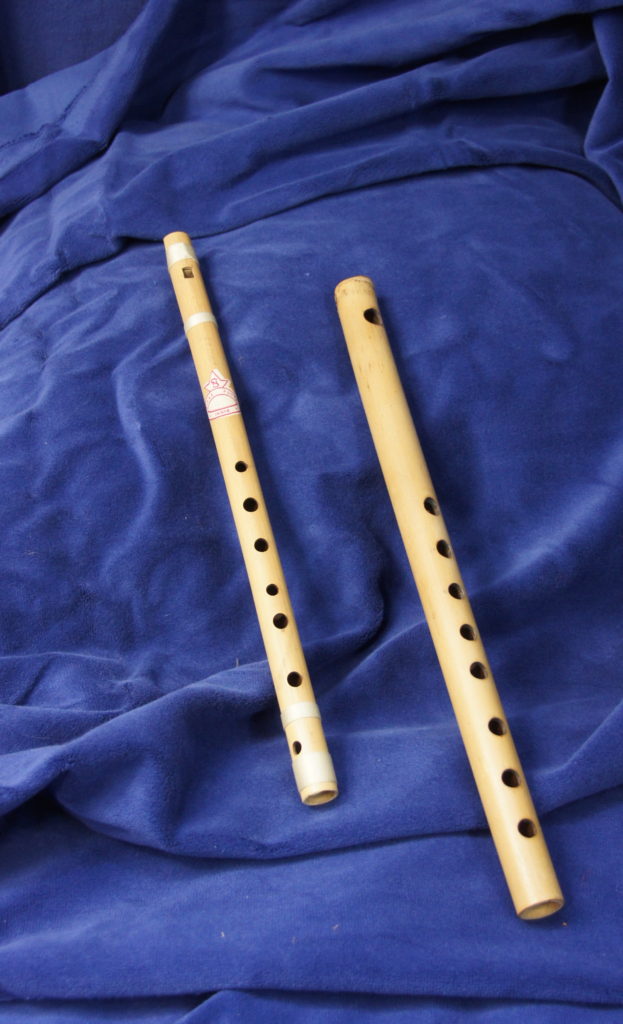
- What brand should I buy?
- What size should I buy?
- How many holes should it have?
- How long do flutes last?
- Why does my bansuri have a 7th hole?
- Why do some flutes have string tied around them?
- How many flutes do I need to buy?
What brand should I buy?
Brands have no meaning for this as well as most Indian instruments. It is all about the maker. The same maker can make flutes for different stores who slap their brand on it. By the same token, stores will slap their brands upon different instruments made by different makers.
What size should I buy?
The size is determined by what key you want the instrument to be in. A lower key requires a larger flute while a higher key requires a smaller length.
How many holes should it have?
South Indian venus have eight holes while North Indian bansuris have six or seven holes. If you plan to play Hindustani sangeet, go for a bansuri. If you plan to play Carnatic sangeet, purchase a venu. If your interest is film songs, then go for whichever you are comfortable with. Most people will chose a six hole bansuri style.
How long do flutes last?
Venus and bansuris will not last forever. A poorly made or poorly maintained flute may last for a few months, while a well made and well maintained one may last for years. But still, they have a rather limited lifespan.
Why does my bansuri have a 7th hole?
Sometimes you will find a seventh hole on a north Indian bansuri. Where the primary function of the other six holes is to allow the playing of notes, the seventh hole has the primary function of stabilising the resonance of the flute.
Under normal situations the lowest note of the bansuri is a mandra saptak Pa (i.e., a fourth below the tonic.) Unfortunately, when overblown to produce a maddhya saptak Pa, the pitches of the mandra-Pa and madhya-Pa do not line up. In normal playing situations this discrepancy is compensated for by one’s embouchure technique.
The reason for this discrepancy has to do with the physics of the flute. The pitch of the flute will be determined by its length. Opening the finger holes is comparable to shortening the length of the flute. The problem is that the effective length of the flute at its lowest note (i.e., all the holes occluded) is actually longer than the length of the flute.
The fact that the effective length of the flute is longer than the physical length would not be a problem except that this effective length is different when one over-blows the flute to produce a higher octave. This is the cause of the mandra-Pa/Madhya-Pa discrepancy.
Many musicians find this annoying, hence the seventh hole.
This seventh hole essentially brings the length of the flute inside the body of the flute where its position during overblowing is more stable. Therefore there is less need to compensate for it with embouchure techniques.
So the bottom line is simple. The seventh hole in a bansuri may occasionally played, but this is not its primary function. It may be played by fingers in a small flute or it may be located on the opposite side so that the big toe can occlude it. But playing the seventh hole is unnecessary and does not reflect its function.
The easiest thing is to ignore it and it will carry on doing its job without any attention from you.
Why do some flutes have string tied around them?
A bansuri has a limited lifespan. At some point it will crack and you will have to dispose of it. Binding the flute with string reinforces it and extends the life of the flute.
How many flutes do I need to buy?
You will find yourself having many flutes. The combination of having different instruments for different keys and the limited lifespan of the instruments means that purchasing flutes will be a never ending process.
You will know when to stop buying flutes when your spouse or significant other starts making unpleasant noises which can no longer be ignored.
